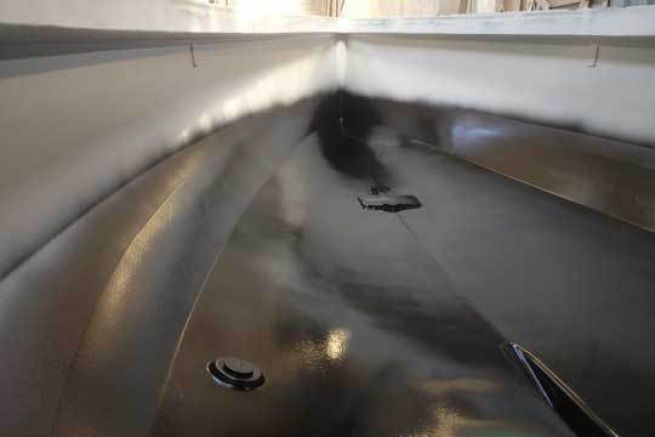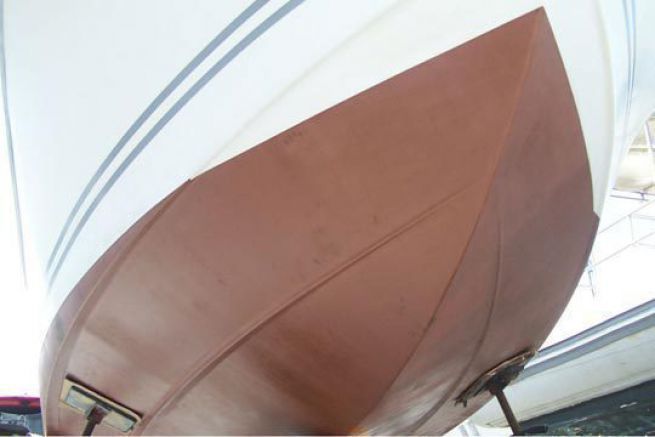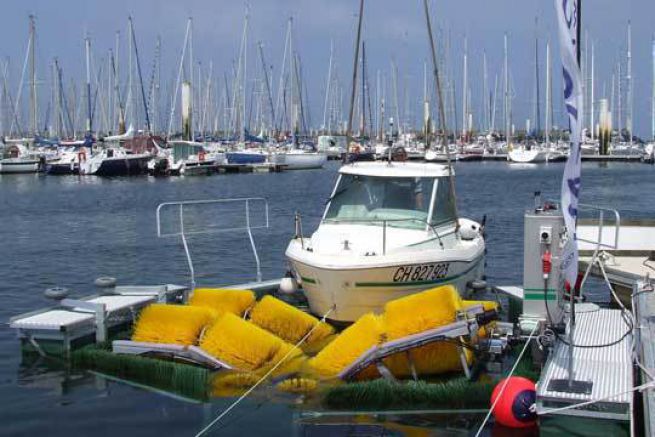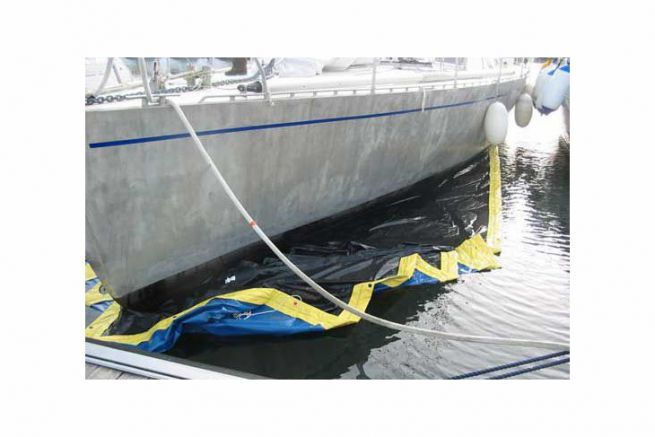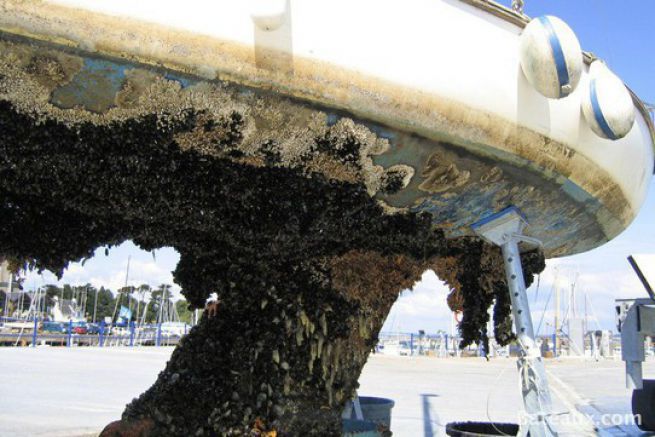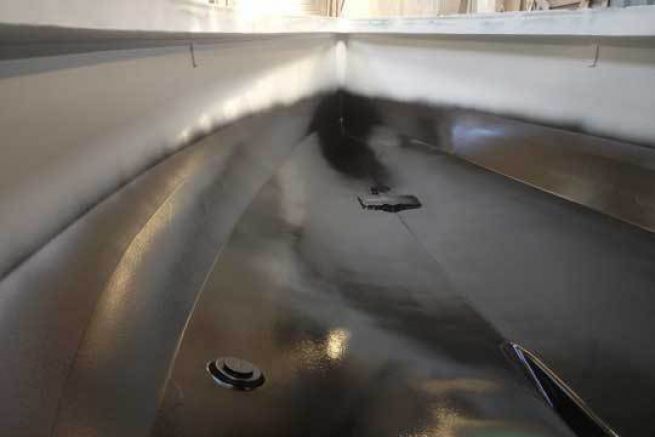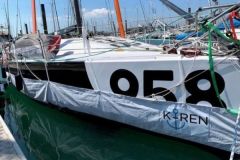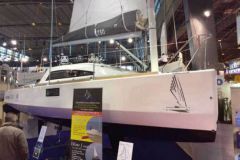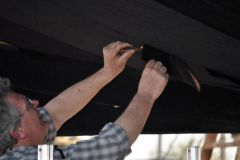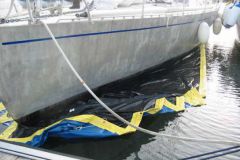M300 is an antifouling made of resin filled with copper powder. It can be applied on a new or used boat. It is then applied as a final layer paint on the hull. The engineers had the idea of applying it directly into the mold at the beginning of the boat's construction.

A polyester boat is built in a female mold with a gelcoat as the first layer, the layer visible upon demolding. The idea of M300 is to apply antifouling directly instead of gelcoat. Indeed, gelcoat is also a polyester resin, just like M300.
By applying the M300 in the mold, instead of the gel coat, a very smooth finish is obtained without having to sand it after application. The boat thus has a perfect glide as soon as it comes out of the mould.
For the shipyard, selling a boat with an antifouling guaranteed 5 to 10 years is also an important added value. The same goes for the customer who will find it on sale.
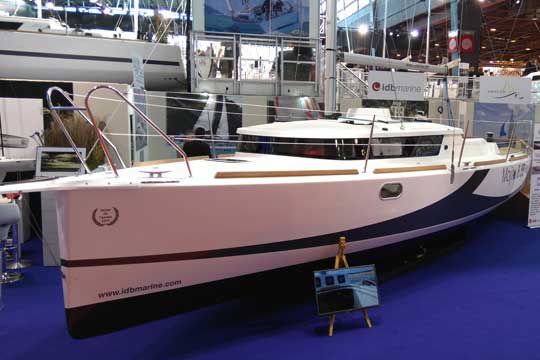
We met Denis Bourdigot from IDB Marine who was exhibiting the finished Mojito 8.88 at the Paris Boat Show. He explains his point of view as a manufacturer:
"Antifouling paint is a polluting product for the sea, but also for the applicator. At the yard, before a boat is delivered, I wait until the weekend when all the workers are away to apply the antifouling with a spray gun. With the M300 Manta, this precaution is no longer necessary and the boats are delivered directly ready to sail."
The M300 is applied in the mould just after the gel coat (reserved for dead works) has been applied. The only constraint is to hide the live works that then receive the M300, otherwise nothing is different in the construction. "I wanted to validate the process at the time of demoulding before going on the next boats. But everything went very well on the Mojito 8.88. It must be said that M300 already has experience from the Ofcet site in La Rochelle which applied this process on a Mini 6.50."
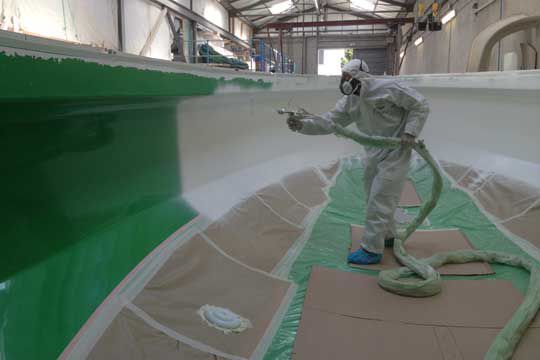

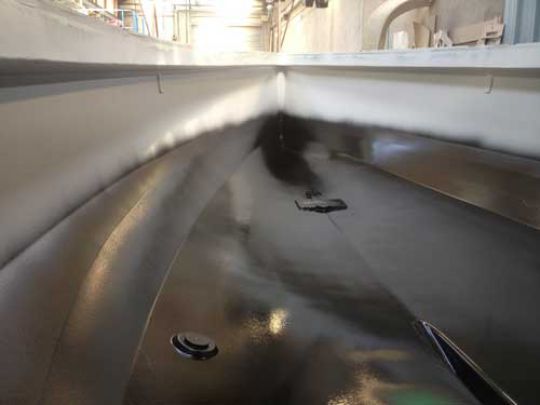
IDB Marine's aim is to offer the M300 Manta as a standard feature on its entire range. "The budget should be the same as that of a boat delivered with an antifouling applied afterwards. Indeed, to apply an antifouling paint, it is necessary to sand the shell out of the mold and then apply a primer before applying 2 coats of antifouling. Between the time of the operation and the price of the paints, we should be able to offer the M300 Manta at the same price.".
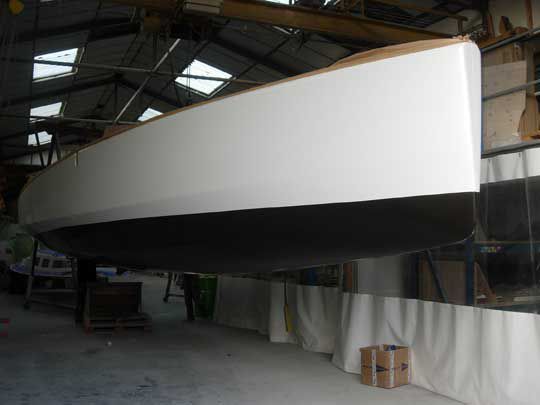
This solution seems really ideal for small shipyards that deliver their boats directly to their customers without going through a distribution network. Large construction sites will have more difficulty applying this increase to their rates. Indeed, it is the dealers who apply antifouling locally when launching the boat. The M300 Manta would take that margin away from them...
M300 also tells us that it is in discussion with other sites. To be continued..
